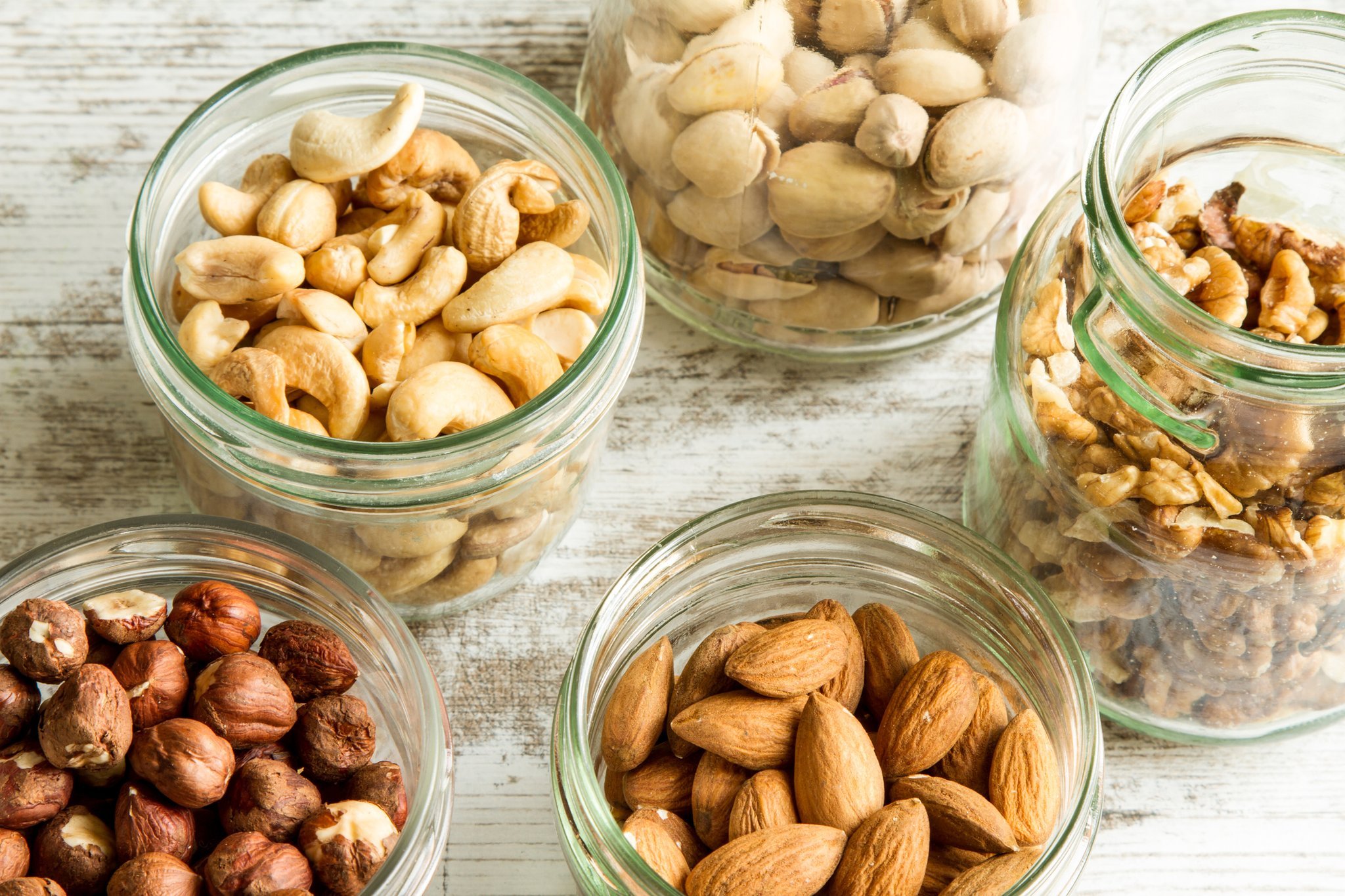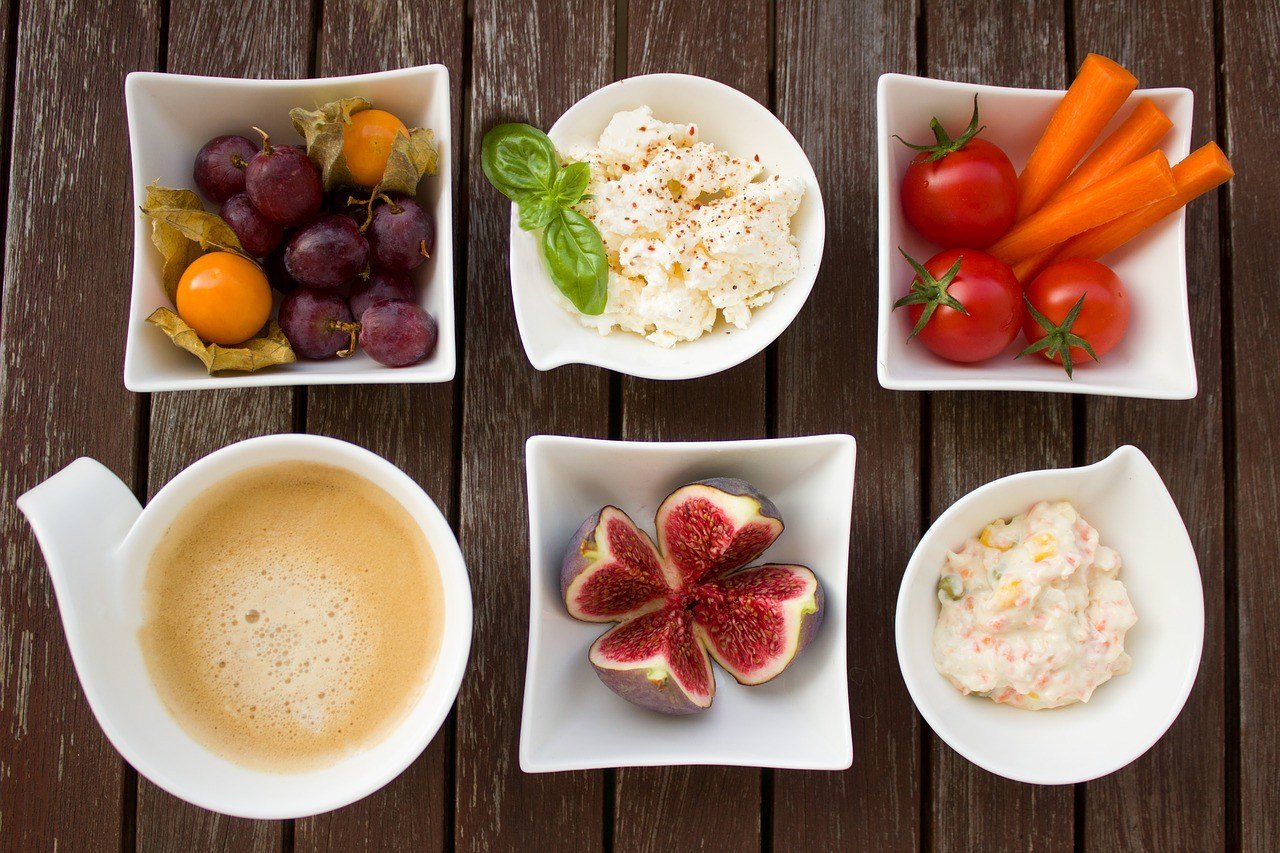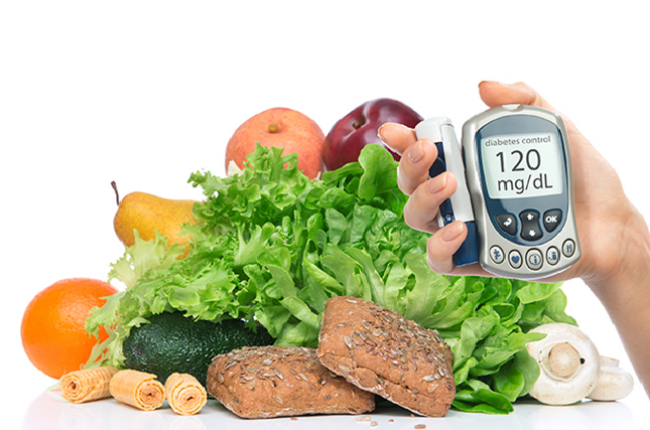How Does Eating Healthy Stabilize Blood Glucose Levels
Diabetics face a daily struggle of keeping blood glucose levels under tight control. But you dont have to be diabetic to benefit from maintaining a steady supply of glucose in your bloodstream to provide your body with the energy it needs. When blood glucose levels are unstable, you risk experiencing a dangerous condition called hypoglycemia in which you feel lightheaded, confused, slow, shaky or fatigued. By choosing healthier food options, including whole, fresh foods with a low glycemic index, you can stabilize your glucose levels to avoid glucose crashes.
The Facts About Diabetes And Blood Sugar
As the American Diabetes Association explains, your body needs sugar for fuel, and theres a fairly complicated process that makes it possible for your body to use that sugar. Insulin, which is made by the pancreas, is the hormone that enables the cells in your body to take advantage of sugar.
Type 2 diabetes occurs when your body isnt able to remove sugar from your blood. This can happen if your body stops being sensitive to insulin or if it starts to respond in a delayed or exaggerated way to changes in your blood sugar.
Diabetes is signaled by an elevated blood sugar level of more than 126 milligrams per deciliter for a fasting blood test, or more than 200 mg/dL at any time during the day. It can also be indicated by a hemoglobin A1C level of 6.5 percent or higher, a measure of the percentage of blood sugar attached to hemoglobin in the blood during the past two to three months.
Unchecked high blood sugar gradually damages the blood vessels in your body. Over the long term, this slow, progressive harm can lead to a dangerous loss of sensation in your legs and feet, a loss of eyesight and kidney function, and an increased risk for heart disease and stroke.
What To Eat To Better Regulate Your Blood Sugar
Dr. Danielle Weiss is the founder of Center for Hormonal Health and Well-Being, a personalized, proactive, patient-centered medical practice with a unique focus on integrative endocrinology. She enjoys giving lectures and writing articles for both the lay public and medical audiences. Dr. Weiss is Assistant Clinical Professor of Medicine at the University of California, San Diego.
While high blood sugar is the characteristic symptom of diabetes, your blood sugar can also be high even if you dont have the condition. To avoid making high blood sugar worse, it is important to make good dietary choices and choose foods that can help you regulate your blood sugar.
Don’t Miss: How To Stop My Sugar Cravings
These Are The Fastest Ways To Stabilize Your Blood Sugar If You Have Diabetes
It takes practice, but maintaining healthy blood sugar levels is totally doable.
When you have diabetes, keeping your blood sugar within range can be a tricky business, especially since everyone’s body reacts differently. Certain foods may cause your blood sugar to drastically spike, whereas your friend or relative can chow down on them with nary a fluctuation. This is why the best thing you can do to keep your blood sugar on the rails is to find your formula, and stick with it.
Related:12 Healthy Ways to Lower Your Blood Sugar
“The first step I always recommend in maintaining stable blood sugar is paying attention to patterns,” says Hailey Crean, RD, a Massachusetts-based certified diabetes educator. Take note of how a certain food usually impacts you, or how much a 30-minute walk might lower your blood sugar. “Picking up on these patterns can help you prepare for highs and lows and do better at avoiding them,” she says.
Here, experts recommend the most efficient ways to raise or lower your blood sugar on the fly. Take them for a spin, adjust accordingly based on your body’s needs, and bust out them out whenever you need to show glucose who’s boss:
The Bottom Line: Take A Whole

No single food, supplement, or workout session is going to be the magic bullet. To maintain a healthy blood sugar level , start eating a minimally processed diet that contains fiber, protein, healthy fats, and high-quality carbohydrates get regular exercise make sure you’re hydrated and well-rested play around with meal composition and experiment with research-backed superfoods and supplements.
If you are pregnant, breastfeeding, or taking medications, consult with your doctor before starting a supplement routine. It is always optimal to consult with a health care provider when considering what supplements are right for you.
Read Also: Why My Blood Sugar Is Not Going Down
Treating Low Blood Sugar
You are at risk of having a low blood sugar reaction if you:
- Skip or delay a meal or snack
- Take too much insulin or eat too few carbohydrates
- Exercise
- Drink alcohol, especially without eating carbohydrates
Check your blood sugar if you have any of these symptoms:
- Weakness and/or fatigue
If your blood sugar is less than 70 milligrams per deciliter :
- Eat 15 to 30 grams of carbohydrate
- Wait 15 minutes and then recheck your blood sugar
- If your blood sugar is still less than 100 mg/dl, take another 15 grams of carbohydrate and retest your blood sugar in another 15 minutes. Repeat if necessary.
Important: If you have frequent low blood sugars speak to your doctor. You may need changes in your medication and/or meal plan.
Responding To High Or Low Blood Sugar Levels
As you learn more about living with diabetes and monitoring your blood sugar levels, youll experience times when your blood sugar levels are too high or too low. But dont panic over these results, Aloi says. The complications of diabetes are caused by poor blood sugar control over the long term typically not by the occasional short-lived elevations in your blood sugar levels. Still, it’s important to be aware of the long-term effects of blood sugar thats too high or too low , and how its treated.
Don’t Miss: Where Should Your Blood Sugar Level Be
A Healthy Balanced Diet
To keep your blood sugar levels stable, choose low glycemic index foods most often. Serve them with lean proteins at every meal, combined with healthy fats such as olive oil, avocados, nuts and seeds. For breakfast, try yogurt with ground flaxseed, fresh berries and some whole-grain granola. Lunch could be a serving of albacore tuna with asparagus and walnuts on a bed of mixed salad greens. A 3.5-ounce turkey burger and a three-bean salad with olive oil-based dressing makes a satisfying dinner that also gives you a good combination of protein, carbs and fat. For a snack, choose apple or pear slices with a tablespoon of nut butter. The Institute of Medicine advises adults to maintain a daily breakdown of 45 to 65 percent of calories from carbs, 10 to 35 percent from protein and 20 to 35 percent from fat.
References
- The Blood Sugar Solution Mark Hyman, MD
Writer Bio
Paula Martinac holds a Master of Science in health and nutrition education from Hawthorn University, with an emphasis on healthy aging, cancer prevention, weight control and stress management. She is Board Certified in holistic nutrition and a Certified Food and Spirit Practitioner, and has written extensively on nutrition for various websites.
How To Combine Foods To Control Blood Sugar
Because protein and fat slow digestion of carbohydrates and therefore can act to stabilize blood sugar, its important to ensure that every time you eat a carbohydrate food you are pairing that food item with either a protein food or a healthy fat food to get the stabilization. Try combining carbohydrate options such as popcorn, crackers, chips, grains, or bread with protein or healthy fat foods like a piece of grilled chicken, hummus, a cheese stick, guacamole, nuts or nut butter, or a hard boiled egg. This kind of combining of your food can really help stabilize the blood sugar levels after consuming those foods. This combining principle for controlling blood sugar can be utilized at both meal times and with snacks you eat throughout the day. Using this technique can help lower blood sugar levels overtime and prevent complications.
Don’t Miss: Where Can I Get Coconut Sugar
Controlling Blood Sugar With Food Sequencing
Could the order in which you eat your food affect your blood sugar?
Yes, suggests a new pilot study published in Diabetes Care entitled Food Order Has a Significant Impact on Postprandial Glucose and Insulin Levels. Learn which foods the authors found we should eat first, and last.
At Pritikin, guests learn to control their weight by starting each meal with a big, hearty salad. That salad may also have big benefits for blood sugar control.
Preventing spikes in blood sugar right after eating a meal is an important therapeutic target. It not only helps optimize blood sugar control, it mitigates the damage to coronary arteries that is characteristic of type 2 diabetes. The less damage to our arteries, the less risk over the long term of serious complications like heart attacks and strokes.
Controlling Blood Sugar With Food Sequencing | Experiment #1: First course is ciabatta bread and orange juice followed by skinless, grilled chicken breast then lettuce/tomato salad with low-fat Italian vinaigrette and steamed broccoli.
If You Dont Fix This Youll Become Diabetic
I know the initial goal today was to list the foods that stabilize your blood sugar, because you dont want your blood sugar to be LOW or HIGH .
But my long-term goal for you is to help optimize your blood sugar levels and improve insulin sensitivity at the same time, so you can prevent and reverse diabetes and live a healthy life!
So lets quickly go over a couple other factors that can also make dramatic improvements in your blood sugar levels
Don’t Miss: Is There Sugar Free Orange Juice
Top 12 Foods That Stabilize Blood Sugar
Understanding the value of our blood sugar, and the types of foods we should be ingesting, was only the beginning. Now, we want to break it down even further.
Here is my list of the top 12 foods you should be incorporating into your diet, so that you can stabilize your blood sugar and give your body what it needs.
Offset Carbs With Fat And Protein

When carbs are consumed as part of a meal that includes protein and fat, they affect blood sugar more slowly. For this reason, planning ahead for healthy, balanced meals is fundamental to good diabetes management, says Jenny Champion, RD, a diabetes educator, personal trainer, and editor of Posh Paleo Magazine.
To make sure your meals are well-balanced, the ADA suggests this method of filling your plate:
- Half your plate: non-starchy vegetables, such as spinach, carrots, tomatoes, or greens
- A quarter of your plate: grains and starchy foods, such as whole grain noodles, rice, or potatoes
- A quarter of your plate: lean protein, such as beef, fish, chicken, or tofu
- Add an 8-ounce glass of low-fat milk and a piece of fruit or half a cup of fruit salad on the side.
Remember that even if you eat the right foods, eating too much can cause your blood sugar to rise. Keeping track of what youre eating and how much youre eating and then how it affects blood sugar is the best way to stay on top of your diabetes, Champion says.
Read Also: How Do I Naturally Lower Blood Sugar
Get A Head Start On Protein
Breakfast seems to be a particularly good time to load up on protein. In a study published in April 2015 in the Journal of Nutrition, people with diabetes who ate 25 to 30 grams of protein at breakfast had lower blood sugar spikes after both breakfast and lunch than those who ate less. Reduced-fat cheese and egg whites are excellent , according to the ADA. Other protein-rich ideas for breakfast when you have diabetes include a breakfast burrito, for example. But because people respond differently to different foods, says Champion, its important to keep tracking your blood sugar to see how various breakfast foods affect you specifically.
Hit The Brakes On Eating
“Not eating until your glucose levels come back down can be a helpful way to stabilize blood sugar,” says Rocio Salas-Whalen, M.D., triple board-certified endocrinologist and founder of New York Endocrinology. The temporary reprieve from food prevents your glucose from getting any worse, and gives your body the opportunity to level out your, well, levels.
Read Also: How Much Sugar In Old Fashioned
Avoid Foods That Cause A Major Spike In Blood Sugar
Like refined white sugar, white breads and pastas, or anything high on the Glycemic Index like soda.
The Glycemic Index is a numerical scale that tells us how quickly and by how much a particular food can raise blood sugar. The lower the GI or glycemic load, the less it affects blood sugar and insulin levels.
Foods with a Low GI score, like apples, grapefruit, broccoli, lentils, nuts and seeds are great for keeping blood sugar levels stable.
Foods with a Medium GI score are good when you need quick energy, but dont want to spike your blood sugar. Medium GI foods include brown rice, oatmeal, sweet potatoes and peas.
You can learn more about the GI Index here.
Cut Down On Added Sugar
We know cutting out sugar can be really hard at the beginning, so small practical swaps are a good starting point when youre trying to cut down on excess sugar. Swapping sugary drinks, energy drinks and fruit juices with water, plain milk, or tea and coffee without sugar can be a good start.
You can always try low or zero-calorie sweeteners to help you cut back. Cutting out these added sugars can help you control your blood glucose levels and help keep your weight down. If your diabetes treatment means you get hypos, and you use sugary drinks to treat them, this is still important for your diabetes management and you shouldnt cut this out. However, if you are having regular hypos it is really important to discuss this with your diabetes team.
Read Also: Where To Buy Sugar Free Chocolate
Organic Coffee And Blood Sugar
Coffee contains an impressive array of antioxidant compounds and nutrients that help to boost brain function, increase fat burning, and protect the body from a whole list of chronic diseases from heart disease to cancer. As long as you are consuming a high-quality organic coffee in moderate amounts, you can reap these benefits for yourself.
When it comes to blood sugar, coffee consumption has been shown as a negative risk factor for diabetes. Basically, drinking coffee is associated with a lower risk of diabetes. Of course, it is very important not to drink it in the evening and I recommend keeping it to 1-3 cups a day max.
I am a strong advocate for a ketogenic diet in promoting balanced blood sugar levels. This is because when your body goes into a ketogenic state, it burns fat for energy instead of sugar and this naturally eliminates massive fluctuations in blood sugar.
A recent study performed on a small group of people showed that caffeine intake in the morning massively boosted ketone production to almost twice the amount . You can boost these benefits even further by drinking our turmeric fat burning coffee for breakfast which also contains sources of healthy fats to further promote ketone production. Read this article to learn 5 strategies to get more out of your coffee.
Take A Shot Of Apple Cider Vinegar
Swigging apple cider vinegar might not sound appealing, but it could help keep your blood sugar in balance if taken before you eat. Some research has found that consuming ACV reduced post-meal blood sugar levels by about half in healthy patients. The theory is that acetic acid, a component of the vinegar, slows down the conversion of carbohydrates into sugar in the bloodstream. Pro tip: Mix a tablespoon or two into a glass of watertaking it straight will burn!
Recommended Reading: Why Does The Body Crave Sugar
The Worst Foods For Blood Sugar Control
Foods that your body quickly converts to sugar or foods high in sugar without other digestion-slowing nutrients are not ideal, says Rumsey. They include:
1. Refined carbohydrates. Avoid bagels, pastries, white bread, white pasta, crackers and cookies. “Refined carbs are ones that have been heavily processed, and the end result has little fiber,” says Rumsey. “Once eaten, they are converted to sugar very quickly, which causes a rapid rise in blood sugar.”
2. Sugar-sweetened beverages. Instead of soda, sweetened iced tea drinks, juices and sports drinks, stick to water and other unsweetened beverages. Many sweetened drinks have eight to 10 teaspoons of sugar or added sugar in just one bottle, which exceeds the daily recommended limit of six teaspoons for women and nine teaspoons for men, says Rumsey. “There is no fiber to slow digestion, so this sugar is digested fast and causes a big spike in blood sugar.”
3. Processed foods with added sugar. The biggest culprits: granola bars, fruit-flavored yogurts, candy and desserts. Rumsey cautions you to examine nutrition labels carefully. “Food manufacturers can use as many as six or seven different types of sugar in one product,” she says.
Raw Cooked Or Roasted Vegetables

These add color, flavor, and texture to a meal. Choose tasty, low-carb veggies, like mushrooms, onions, eggplant, tomatoes, Brussels sprouts, and low-carb squashes, like zucchini.
Try them with dips such as low-fat dressings, hummus, guacamole, and salsa, or roasted with different seasonings such as rosemary, cayenne pepper, or garlic.
Recommended Reading: Will High Sugar Make You Dizzy